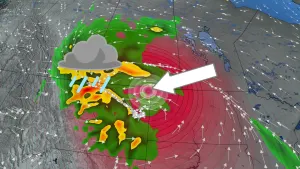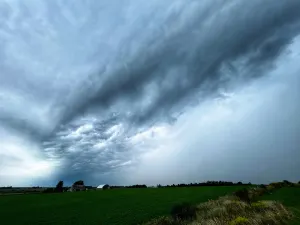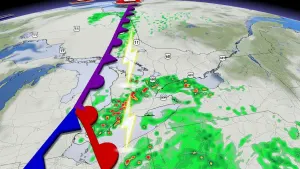
How to restore and protect your lawn through winter after a drought
Don’t let the drought destroy your lawn for good. These tips can help keep it alive over the winter, but the time to act is now.
Watching the grass grow has always been a metaphor for being really bored, so imagine how much more of a painful experience it would be to watch the grass NOT grow. And yet, as it turns out, watching the grass not grow, thanks to the drought in Ontario this year, turned out to be far more interesting than I thought.
I’d made the naïve assumption that because the drought had stunted my lawn to the point that the tallest grass barely made it up to my ankle, I could put away the lawnmower and just let the grass go to sleep until the spring. This was a very bad assumption, but in my defence, having a lawn is somewhat new to me.
I suspected that there was more to it, so, I decided I needed to talk to an expert and I since I’d already interviewed Dr. Eric Lyons about Ontario’s drought and the effect it was having on our grass, I went back to the Guelph Turfgrass to ask him about what do with my lawn before the snow piled on top of it.
He explained that the summer wasn’t quite as bad as what we thought it might be when we talked in the early summer.
“Our drought was quite long, but we got a few timely rainfalls that weren’t quite enough to green up the turf, but I think it kept the turf alive, and that’s what we needed,” he explained.
So alive is good, but how do we get our lawn to survive the winter?
According to Dr. Lyons, there are some key things that can be done before the snow starts to flie in.
“One of the biggest problems coming from the drought is that the grass is weakened. It needs resources to start growing and it needs resources to start recovering from that long period of dormancy,” he said.
“The key is to make sure there’s enough water and enough fertilizer for the grass. The whole time it was under drought, it couldn’t take up any nitrogen or potassium that it needed. So, in September, and it’s important to do this before October, it’s important to give it enough nitrogen to get enough growth to fill in spots that might have some wear or just little growth before wintertime.”
DON'T MISS: Your guide to lawn maintenance products
Fertilizer is a bit of a mystery to me, so when Dr. Lyons talked about feeding the grass, I had no idea what to get or how much to put down. He elaborated for me.
“A lawn fertilizer has nitrogen, very low phosphorus and potassium in it, and you want to put down half a kilogram per 100 square metres. Some areas of Canada do need high phosphorus, but if you live there, you probably already know what you need.”
“If you have patchy areas of grass due to wear or insect damage, you’ll need to do some reseeding before the grass stops gowning. For that, a good mix of Kentucky bluegrass, perennial rye, and fine fescue will work if you can keep most traffic off it. One hundred per cent perennial ryegrass will make the lawn green quicker, but may not be able to handle another drought when it comes.”
WATCH: Why Ontario's lawns are looking extremely dry
RELATED: Fall is a critical time for lawn care, here's what you need to know
I asked Dr. Lyons about mowing as I literally have not taken my mower out the shed at all this summer and I planned to bury it under all the other stuff that normally goes in sheds. I’m getting very used to being wrong.
“A lot of us got out of the habit of mowing our lawns this summer because of the drought. We mowed once every three weeks and then we just stopped mowing altogether. But we have to continue mowing into the fall, as long as the grass is growing,” he explained. “We do this because if we get a lot of growth in the fall, the grass grows up, falls over and then doesn’t recover as well in the spring. Another key is to make sure that there’s no grass clippings or leaves on the lawn. You don’t need to bag everything up, but instead, mow enough that the leaves and grass clippings are mulched up enough to fall through the canopy.”
So, while the summer was tough on our lawns, don’t give up yet. Feeding and fertilizing can give our lawns the best start to the spring you can. Just make sure you get to it as soon as you can. It might still feel like summer out there, but the colder temperatures are on their way and things are still interesting amongst the green blades springing up in our front and backyards.
(Thumbnail credit: Getty Images)










